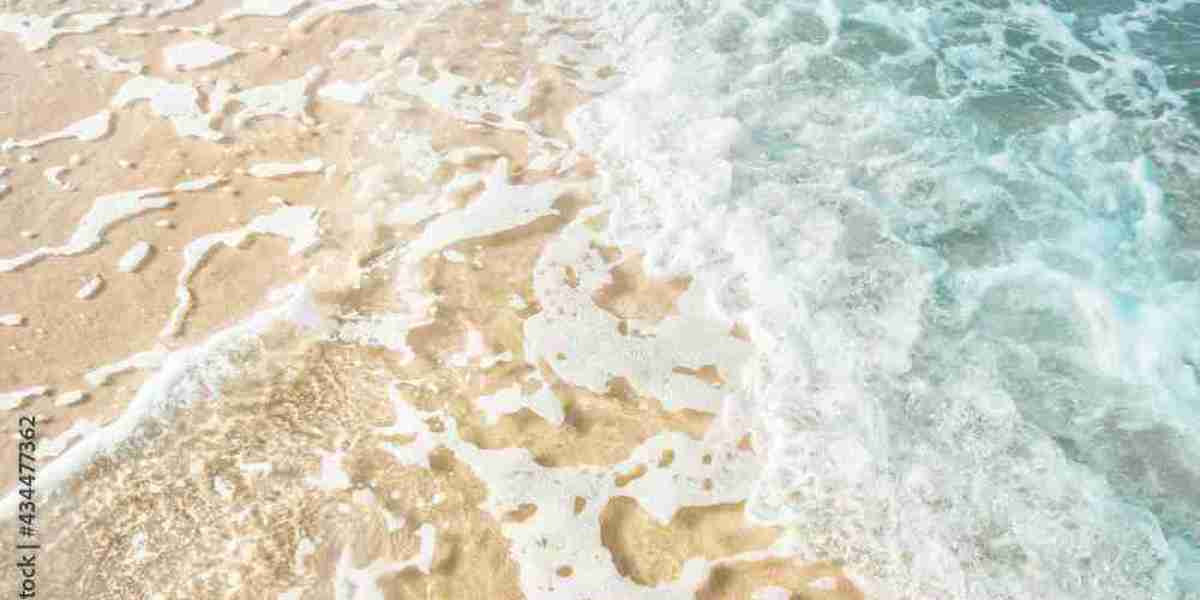Peyronie's disease is a complex and often distressing condition characterized by the development of fibrous scar tissue, known as plaque, inside the penis. This plaque can cause a range of symptoms, including curvature of the penis during erection, pain, shortening, and in some cases, erectile dysfunction. While the exact cause is not always clear, it's believed to stem from repeated minor trauma to the penis, genetic predisposition, or autoimmune factors. For individuals seeking help for Peyronie's Disease in Riyadh, understanding the nature of the condition is paramount to finding appropriate care.
What is Peyronie's Disease?
Peyronie's disease is a localized disorder affecting the tunica albuginea, the elastic sheath that surrounds the erectile tissue of the penis. When this sheath loses its elasticity due to scar tissue formation, it prevents the penis from expanding uniformly during an erection, leading to a bend or deformity. The condition typically progresses through two phases:
Acute Phase: This early stage can last from 6 to 18 months. During this time, the plaque is forming, and patients may experience pain during erections and a worsening of the penile curvature.
Chronic (Stable) Phase: Once the plaque has matured, the pain usually subsides, and the curvature stabilizes. At this point, the focus shifts to addressing the anatomical deformity and any associated functional issues.
Common Symptoms and Impact
The symptoms of Peyronie's disease can vary but often include:
Palpable Plaques: Hard lumps or bands of tissue felt under the skin of the penis, even when flaccid.
Penile Curvature: The most characteristic symptom, ranging from a slight bend to a severe deformity (upward, downward, or sideways).
Painful Erections: Discomfort during erection, especially in the acute phase, which often lessens or disappears in the chronic phase.
Penile Shortening or Narrowing: A reduction in penile length or an hourglass-like indentation.
Erectile Dysfunction (ED): Difficulty achieving or maintaining an erection firm enough for sexual intercourse, often due to physical deformity or associated anxiety.
The psychological and emotional impact of Peyronie's disease can be significant, affecting self-esteem, relationships, and overall quality of life.
Seeking Specialized Care for Peyronie's Disease in Riyadh, Jeddah and Saudi Arabia
Given the sensitive nature and complex pathophysiology of Peyronie's disease, seeking specialized medical attention is crucial. For individuals dealing with Peyronie's Disease in Riyadh, Jeddah and Saudi Arabia, consulting with a urologist, particularly one with expertise in men's health and reconstructive urology, is the recommended first step. These specialists are equipped to provide an accurate diagnosis and develop a personalized treatment plan.
The Role of a Urologist
Urologists are medical doctors who specialize in the urinary tract system and male reproductive organs. Within urology, some physicians have further specialized training in conditions affecting male sexual health, including Peyronie's disease. They possess the expertise to:
Accurately Diagnose: Through a combination of patient history, physical examination, and potentially specialized imaging, they can confirm the presence of Peyronie's plaques and assess the degree of curvature and associated issues.
Determine Disease Stage: Identifying whether the condition is in the acute (evolving) or chronic (stable) phase is critical, as treatment approaches differ significantly between these stages.
Offer Comprehensive Treatment Options: Urologists are knowledgeable about the full spectrum of available therapies, from non-surgical interventions to advanced surgical procedures.
Provide Holistic Support: They understand the physical and emotional challenges associated with the condition and can offer guidance and support, or refer to other specialists if needed.
Initial Consultation and Diagnosis Process
During your initial consultation, the urologist will conduct a thorough assessment:
Detailed Medical History: You'll be asked about the onset of symptoms, progression of curvature, pain levels, any difficulty with sexual intercourse, and your overall health, including any family history of Peyronie's or related connective tissue disorders.
Physical Examination: The doctor will carefully examine your penis in a flaccid state to feel for the presence, location, and size of any palpable plaques.
Erection Assessment (often in-office): To accurately assess the curvature and any deformities during erection, the doctor may perform an in-office "induced erection" using an injection of a medication that causes an erection (intracavernosal injection). This allows for precise measurement of the bend and identification of any hourglass deformities or shortening.
Imaging Studies (Duplex Ultrasound): Often, a penile duplex ultrasound is performed after an induced erection. This imaging technique provides detailed information about the plaque, including its size, location, and whether it's calcified. It also assesses blood flow to the penis, which is crucial for evaluating co-existing erectile dysfunction.
This comprehensive diagnostic approach ensures that the treatment plan is specifically tailored to your unique condition.
Non-Surgical Approaches for Peyronie's Disease
For many men, particularly in the acute phase of Peyronie's disease or for those with mild to moderate curvature, non-surgical treatments are the first line of defense. These therapies aim to reduce pain, stabilize or improve curvature, and enhance sexual function without invasive procedures.
Oral Medications
While no oral medication has consistently shown dramatic results in reversing established plaque or severe curvature, some are used, particularly in the acute phase, to potentially reduce pain or slow disease progression.
Pentoxifylline: This medication is thought to have anti-fibrotic and anti-inflammatory properties, potentially helping to prevent plaque progression.
Vitamin E, Colchicine, and Tamoxifen: These have been used historically, but current evidence for their effectiveness in significantly altering plaque or curvature is limited.
PDE5 Inhibitors (e.g., Tadalafil): Medications typically used for erectile dysfunction, like Tadalafil, may be prescribed daily. While they don't directly treat the curvature, they can improve erectile rigidity and blood flow, which may prevent worsening of scarring and facilitate penile remodeling efforts.
Intralesional Injections
Injections directly into the Peyronie's plaque are a more targeted non-surgical approach, often used for stable plaques and specific degrees of curvature.
Collagenase Clostridium Histolyticum (CCH - Xiaflex): This is the only FDA-approved injectable medication for Peyronie's disease. CCH works by breaking down the collagen that forms the plaque. Treatment involves a series of injections into the plaque, followed by "modeling" (manual bending of the penis by the doctor and at-home stretches by the patient) to further break down the softened plaque and reduce curvature. It is typically recommended for moderate to severe curvature (e.g., greater than 30 degrees).
Verapamil: This medication, commonly used for high blood pressure, is thought to disrupt collagen production and break down existing collagen when injected into the plaque. It may help reduce pain and improve curvature for some patients.
Interferon: This protein has anti-inflammatory and anti-fibrotic properties, and injections into the plaque may help reduce plaque size and curvature.
Traction Therapy and Vacuum Erection Devices (VEDs)
These external mechanical devices are often used in conjunction with other treatments or on their own, especially in the early phase of the disease.
Penile Traction Devices: These devices gently stretch the penis over time. When used consistently (often for several hours a day over months), traction therapy can help reduce curvature, minimize penile shortening, and potentially prevent plaque progression. It's often combined with CCH injections to enhance results.
Vacuum Erection Devices (VEDs): VEDs create a vacuum around the penis, drawing blood into the erectile chambers. Regular use (e.g., 10-15 minutes, once or twice daily) can help improve erectile rigidity, reduce curvature, and maintain penile length by stretching the tunica albuginea.
The choice of non-surgical treatment depends on the phase of the disease, the severity of symptoms, and individual patient factors, and should always be discussed with a specialist.
Surgical Interventions for Peyronie's Disease
When non-surgical treatments are insufficient or when the curvature is severe and stable, making intercourse difficult or impossible, surgical intervention may be recommended. Surgery aims to correct the penile deformity and restore functional erections. It's generally advised to wait until the disease has been in its stable (chronic) phase for at least 3-6 months with no changes in curvature or pain.
Plication Procedures
Plication techniques are surgical options that shorten the longer, non-affected side of the penis to match the length of the plaque-affected side, thereby straightening the penis.
Mechanism: Small stitches are placed on the side opposite the curve, causing that side to shorten. This "tucks" or "folds" the unaffected tissue, correcting the bend.
Ideal Candidates: Best suited for men with good erectile function and less severe curvatures (typically less than 60-70 degrees) who have not experienced significant penile shortening.
Considerations: The main drawback is that plication procedures will result in some degree of penile length loss, proportionate to the amount of curvature corrected. The extent of shortening should be discussed thoroughly with the surgeon.
Plaque Incision/Excision with Grafting
This procedure involves making an incision into or removing a portion of the Peyronie's plaque to allow the penis to straighten. The resulting gap is then covered with a graft material.
Mechanism: The surgeon cuts or excises the inelastic plaque, which releases the tension causing the curve. A graft, which can be taken from the patient's own body (e.g., vein, skin), donor tissue, or synthetic material, is then sewn into the defect to provide structural support and allow for lengthening.
Ideal Candidates: Often recommended for men with severe curvatures, significant hourglass deformities, or those who have lost substantial penile length. It is also suitable for men with good erectile function.
Considerations: This procedure carries a higher risk of complications compared to plication, including potential for temporary or permanent nerve damage (leading to numbness), a higher risk of post-operative erectile dysfunction, and potential issues with graft healing or contraction. While it can restore some length, full restoration to pre-disease length is often not possible.
Penile Prosthesis Implantation
For men who have both severe Peyronie's disease (making intercourse impossible or very difficult) and co-existing erectile dysfunction that doesn't respond to oral medications, a penile implant (prosthesis) is often the best solution.
Mechanism: A surgeon implants a device into the penis that allows the man to achieve a rigid, straight erection. During the implantation, the surgeon can often straighten the penis by manipulating the plaque or performing adjunctive procedures like plaque incision or modeling.
Types: Implants can be inflatable (most common, allowing for controlled erection and deflation) or malleable (semi-rigid rods).
Benefits: This procedure effectively addresses both the curvature and erectile dysfunction simultaneously. It offers a reliable and immediate solution for achieving a functional erection and a straightened penis.
Considerations: This is a permanent solution and involves irreversible surgical alteration of the penis.
The choice of surgical method is highly individualized and depends on the specific characteristics of the Peyronie's disease, the patient's erectile function, and their personal preferences and goals. A detailed discussion with a urological surgeon is essential to weigh the risks and benefits of each option.
Living with Peyronie's Disease: Beyond Medical Treatment
Managing Peyronie's disease extends beyond medical and surgical interventions. Emotional support, lifestyle adjustments, and open communication with a partner are vital components of a holistic approach to living with this condition.
Psychological and Emotional Support
The diagnosis and progression of Peyronie's disease can have profound psychological effects, including anxiety, depression, loss of self-esteem, and relationship strain.
Counseling/Therapy: Seeking support from a therapist or counselor specializing in sexual health can help individuals and couples cope with the emotional impact of the disease, address body image concerns, and improve communication.
Support Groups: Connecting with others who have Peyronie's disease can provide a sense of community, reduce feelings of isolation, and offer practical advice from shared experiences. While formal groups may be limited in some areas, online forums can provide valuable peer support.
Open Communication with Partner: Honest and empathetic communication with a sexual partner is crucial. Discussing concerns, fears, and expectations can strengthen the relationship and help both individuals adapt to the changes.
Lifestyle and General Health
While not direct treatments for the plaque, maintaining overall health can positively impact sexual function and well-being, which indirectly supports Peyronie's management.
Healthy Lifestyle: Regular exercise, a balanced diet, and avoiding smoking and excessive alcohol consumption contribute to better cardiovascular health, which is important for erectile function.
Managing Underlying Conditions: Conditions like diabetes, hypertension, and cardiovascular disease are risk factors for Peyronie's disease and can also contribute to erectile dysfunction. Effective management of these conditions is important.
Patience and Realistic Expectations: Understanding that Peyronie's disease often requires ongoing management and that results from treatments can be gradual is important for managing expectations and avoiding disappointment. Complete restoration to pre-Peyronie's state is often not achievable, but significant improvement in function and quality of life is realistic.
Navigating the journey with Peyronie's Disease in Riyadh, Jeddah and Saudi Arabia requires patience, resilience, and a proactive approach to seeking and adhering to professional guidance, as well as embracing comprehensive self-care.
Frequently Asked Questions
Learning about Peyronie's disease often brings forth specific questions regarding its nature, treatment, and long-term implications. Here are four unique insights into commonly asked questions.
People Often Ask: Is Peyronie's disease always painful, or does the pain go away?
No, Peyronie's disease is not always characterized by persistent pain. In the initial, "acute" phase of the disease, which can last up to 18 months, many men experience pain during erections. This pain is believed to be due to the active inflammation and scar tissue formation within the penis. However, as the disease progresses into the "chronic" or stable phase, the inflammation typically subsides, and the pain usually lessens or resolves completely. While the curvature or deformity may remain, the discomfort associated with it often diminishes significantly.
Commonly Wondered: Can natural remedies or supplements effectively cure Peyronie's disease?
Currently, there is no strong scientific evidence to support the claim that natural remedies or over-the-counter supplements can effectively cure Peyronie's disease or reverse established plaque. While some individuals may explore certain vitamins (like Vitamin E) or herbal supplements, their efficacy in significantly altering penile curvature or dissolving plaque has not been consistently proven in robust clinical trials. For genuine and lasting improvement, it is crucial to consult with a urologist who can offer evidence-based medical treatments or discuss surgical options when appropriate.
Often Questioned: How quickly does Peyronie's disease develop, and will it always get worse?
The development of Peyronie's disease can vary. Some men experience a relatively sudden onset of symptoms, while for others, the changes appear more gradually over weeks or months. It does not always get progressively worse. The disease typically goes through an initial "acute" phase where symptoms like pain and curvature may worsen, lasting up to 18 months. After this, the condition often enters a "chronic" or stable phase, where the plaque stops growing, the pain usually resolves, and the curvature stabilizes. In some rare cases (around 10-15%), symptoms may even improve spontaneously, especially if identified and addressed early.
Many Inquire: If I have Peyronie's disease, does it mean I will definitely need surgery?
No, having Peyronie's disease does not automatically mean you will definitely need surgery. Surgical intervention is typically considered as a last resort for men in the chronic (stable) phase of the disease who have severe curvature that prevents satisfactory sexual intercourse, and who have not responded to non-surgical treatments. Many men with Peyronie's disease, particularly those with mild to moderate curvature or in the acute phase, can be successfully managed with non-surgical options like intralesional injections (e.g., CCH), penile traction therapy, or vacuum erection devices. The decision for surgery is highly individualized and made in consultation with a specialized urologist.




